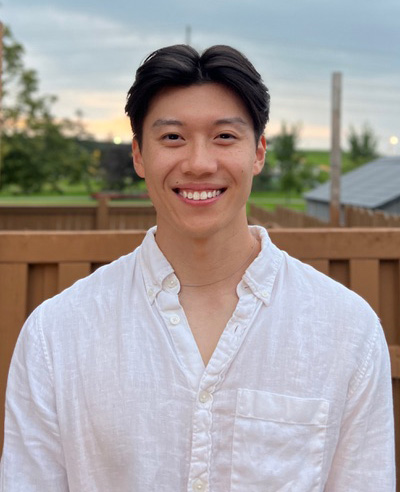1. Welcome back to the TBCRU. Can you remind our readers who you are and tell us a little bit about yourself?
Hi! My name is Julia Gevaert. Last year I was fortunate enough to receive a TBCRU studentship for my first year in the Medical Biophysics M.Sc. program, working under the supervision of Dr. Paula Foster. This year, I will be transitioning to the Ph.D. program to expand on my exciting research project of developing a new imaging technique called Magnetic Particle Imaging. This technique is being specially developed in our lab for looking at the way breast cancer spreads throughout the body so that we can target treatments more effectively to areas such as bone, lung, and brain.
2. As a senior researcher, why is the TBCRU Studentship Award important to you, and how does it allow you to advance your research?
This studentship award is important because it allows me to expand my project to mouse models, progressing this work towards real treatments and therapies for patients in the clinic. Growing up, my best friend’s mom was diagnosed with breast cancer, so this studentship is very meaningful to me because it motivates me to work hard towards the collective research goal of finding a cure.
3. In a few lines, can you remind us what you are doing and what problems you hope to solve with your research?
The motivation behind my research comes from the limitations of current techniques for tracking breast cancer cells in the body. We want to be able to accurately see where cancer is, and where it might spread to so that we can safely and effectively administer treatments to those areas without harming healthy tissue. Magnetic Resonance Imaging (MRI) is a great way to do this, but because of how the images are collected, we aren’t able to see cells that travel to areas such as the lungs, brain, and bone. My research project looks at using Magnetic Particle Imaging (MPI), which can see those areas by using special iron particles that tag the cells and show up as bright spots in our images. This allows us to see where and how many cells are in the body.
4. Since we last spoke, have there been any changes to or any advancements in your research?
This past fall, our MPI system received a major software upgrade that allows me to change many different imaging factors. This will help us see lower cell numbers with higher resolution, which helps make sure we do not miss anything. Our lab has also published a perspective paper on MPI, focused on recent advancements and future possibilities of using MPI for cancer cell tracking.
5. Have you had an opportunity to present your research to your peer researchers? Was it at a national or international meeting or in some other way?
Over the last year, I have had the opportunity to present my research as a talk and poster at the World Molecular Imaging Congress, an international conference focused on the different imaging techniques and how we can apply them to different applications. This was my first international conference as a graduate student, and I was very excited to share my work. I have currently submitted two more abstracts to another international conference, and I hope to share my work there as well.
6. Did that presentation setting help you share your breast cancer research with the broader scientific community?
Absolutely – conferences and sharing your work are essential for feedback and learning other directions and applications for your research. Research is truly a collaborative environment, and the more team members you can share with, the further your research can go.
7. Did any of the feedback or conversations following your presentation help you and your research in any way?
The feedback and conversations from presenting this research certainly helped advance my project. It was an ideal setting to discuss some of the challenges I had been working on and get advice from experts in the field with suggestions of ways to overcome those problems.
8. Now that you have had some more time with your research, how do you think you will apply your research in a real-world situation?
I think my research will be useful for designing cancer treatment plans and developing cell-based therapies that directly target breast cancer cells in a real-world situation. Targeted treatments will ensure that only the cancer is being treated, with minimal effects on surrounding tissues. Hopefully, this will lead to more effective therapies with faster cures.
9. Tell us about your involvement in the Breast Cancer Society of Canada fundraising events (Dress for the Cause, Mother’s Day Walk)?
This was a unique year for us at TBCRU. We had to be creative with our fundraising due to COVID-19, so this year, we organized an online silent auction and virtual games night. We had over 30 people participate in the game’s night, and generous donations to our silent auction from local artists, photographers, bakeries and much more!
10. What about your participation in other Breast Cancer Society of Canada donor events or tours? How has that impacted your perspective on breast cancer research?
Being a part of the Breast Cancer Society of Canada events has really made me appreciate all the efforts and accomplishments of all those involved. It’s gratifying to be part of such a great team and see the collaboration between researchers, community members, partners, and BCSC members. It has given me perspective on how such different research projects and labs all come down to our shared goal of finding a cure.
11. What are you currently reading, watching or listening to outside of the lab?
Outside of the lab, I love watching the Bachelor on Mondays (for all the drama!) and seeing what new documentaries are streaming on Netflix.
SUPPORT RESEARCHERS LIKE JULIA GEVAERT CONSIDERING A DONATION TO THE BREAST CANCER SOCIETY OF CANADA. FIND OUT HOW YOU CAN HELP FUND LIFE-SAVING RESEARCH, VISIT BCSC.CA/DONATE TODAY.




